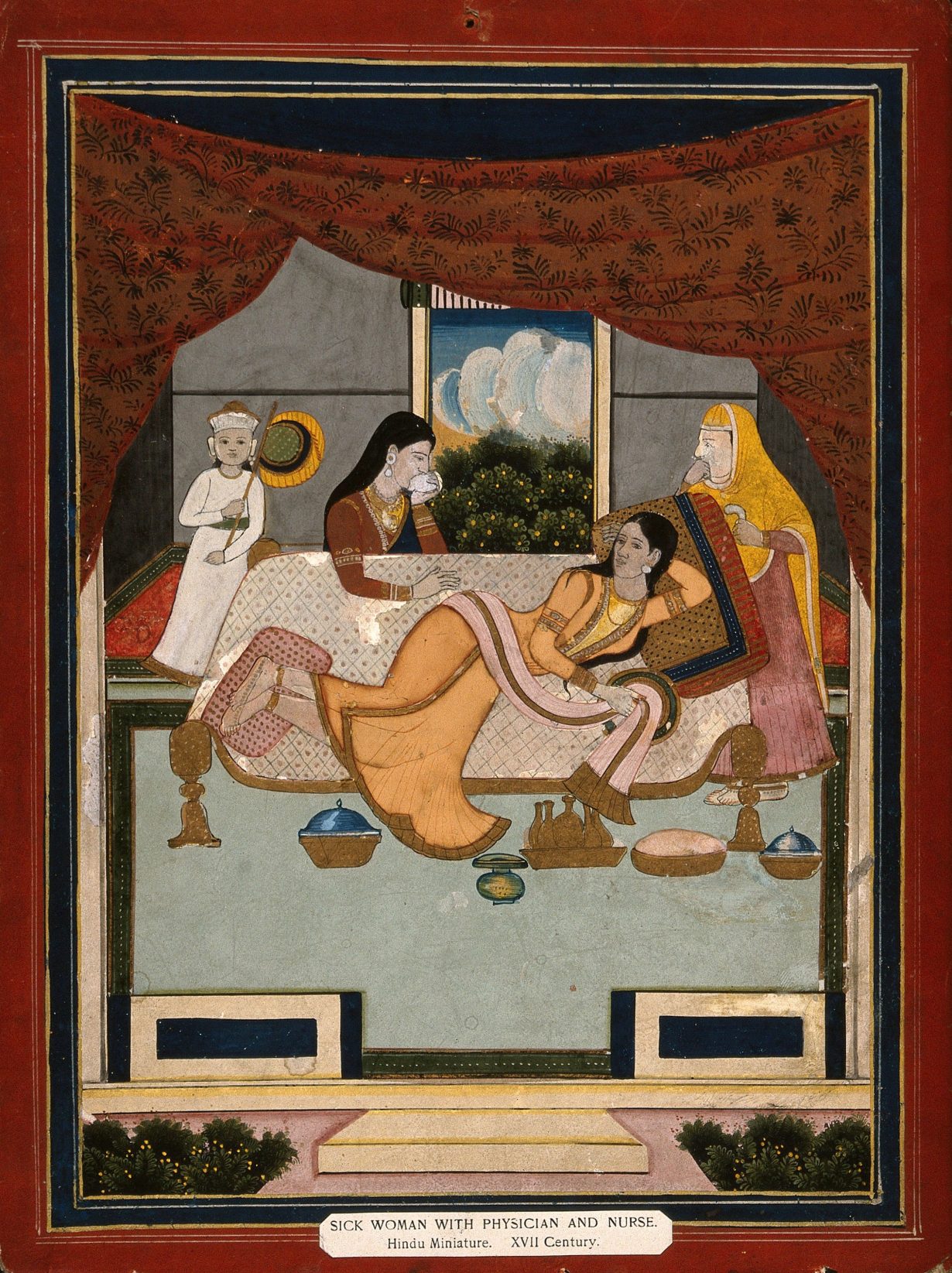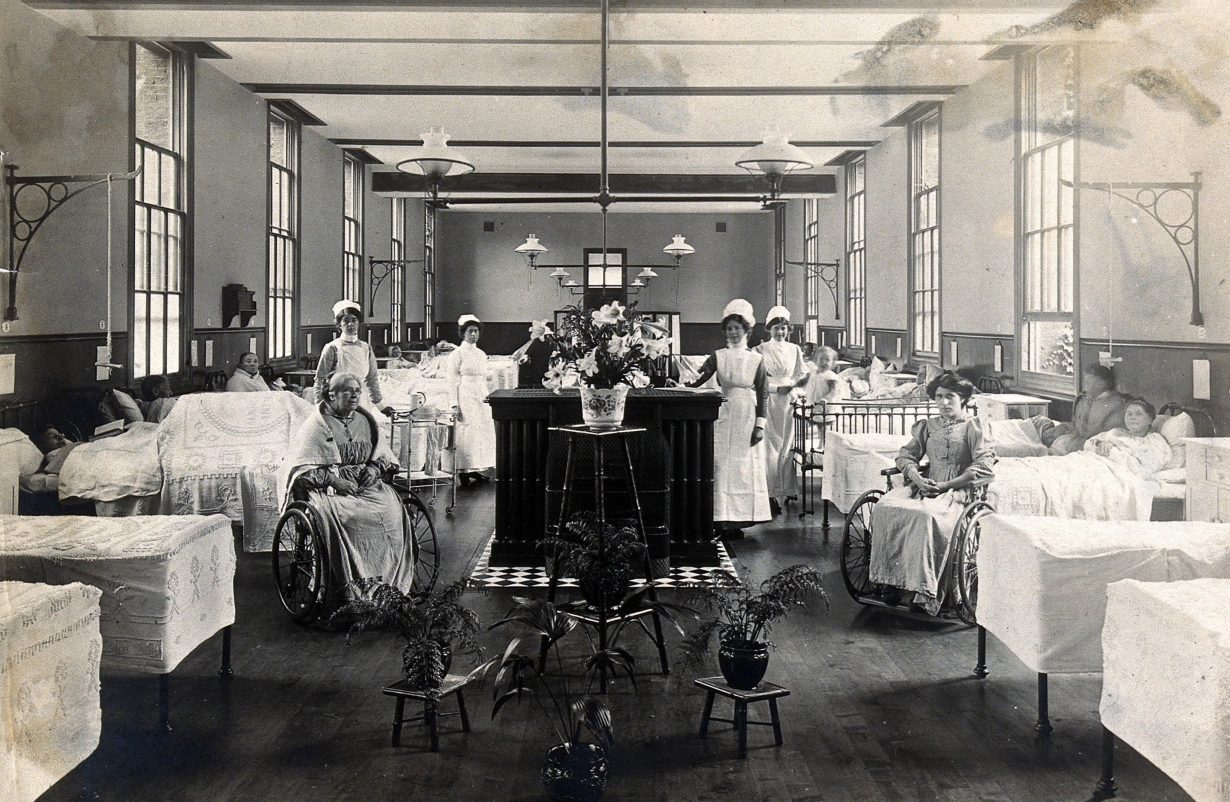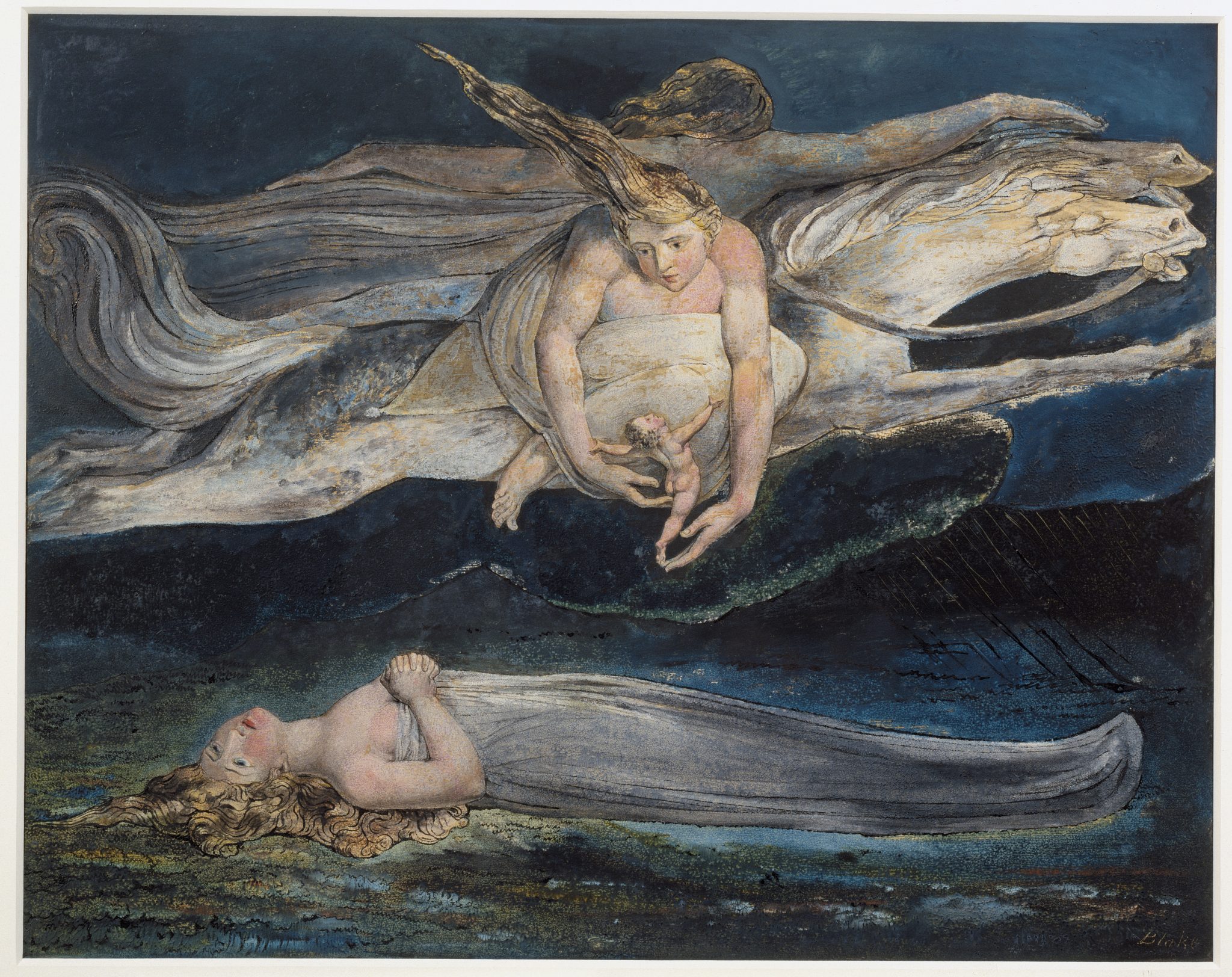Drawn to medicine following studies in art criticism, a nurse reconsiders care in the ‘postpandemic’ present
A ghost of me clocks in every day and tries to corporealise. The ghost tells jokes to the patients and professional colleagues. It fulfils the role of a nurse, it is a nurse, and it never betrays this secret: some days, I feel like my empathy is gone.
Since 2016 I’ve worked in a teaching hospital in St Louis, Missouri. On my journey I’ve seen great love and concern for the sick and infirm from nurses, doctors and families. I’ve also seen patients needlessly suffer from medical futility, perpetuated by impatient surgeons and deaf, obstinate relatives. I’ve liberated people from life support; I’ve also wrapped them in plastic and sent them to the morgue. I’ve been a beacon for my patients by guiding them through the unpredictable ordeal of hospitalisation, though lately it feels as if a shadow lingers over all that I do as a nurse. I have a burning desire to help and care, yet I feel that our system of healthcare and our culture in the United States is incongruous with being healthy. As a result, I feel disenchanted with my chosen profession. I’ve lost sight of who I am. My undergraduate studies in visual culture and art criticism partly prompted me to become a nurse. I was drawn to nursing as an analogue to the social conventions of the art critic, whose creative output is formed by a pathological endeavour to interpret and justify. In my mind, that latter reflects the way in which the nurse-doctor dichotomy is similar to art criticism-art history. Recently I’ve felt estranged from my initial intentions, and I’ve definitely forgotten my liberal-arts education.
A hospitalised patient meets dozens of different professionals over the course of their stay (from admittance at reception to the emergency department, to the ultrasound specialist or the cafeteria staff). In the ICU, ill patients often require longer stays, and they, their families, the nurses (and housekeepers, nutritionists, physical therapists, chaplains) get to know one another deeply. Over the course of these patients’ experiences, the time my coworkers and I would spend with them was rich, meaningful and all-consuming. I could aggressively regulate continuous IV medications to prevent acute heart failure and witness the improvement in a patient’s cardiac output in real time. I could just sit with a patient and talk about journaling as a method of combatting their post-heart attack depression. I could be there when a patient finally sits on the side of the bed for the first time in two months.

Caregiving is a kind of performance. As an ICU nurse, you learn a few tricks: like how to tell the same joke six different ways because the family isn’t ready to withdraw care today; how to phrase your words for maximum resonance so as to teach your patients and their families about medical procedure and postcare health management (you want your diction to stick in their minds); you also want to have fun reciting these patient instructions, because you will repeat yourself liberally; you make mantras out of the maxims of heart-failure management. Despite these tricks, you will still find yourself dreaming about your patients and dreading returning to the hospital, which increasingly feels like a Las Vegas attraction: a loud, colourful sensory overload that runs every hour, seven days a week, 365 days a year. You are on autopilot, operating on muscle memory. This is the nurse’s life, and also the reason for forming what we call ‘healthcare families’. Medical professionals form unofficial support groups within the healthcare world because they instinctively understand the emotional and physical demands of the roles they work in.
Professional burnout is not limited to the healthcare professions, but it seems increasingly to be a topic of conversation among my nursing colleagues. It’s a testament to how established the roles of healthcare professionals are that I can come into work looking like dogshit and the public still thinks I’m a nurse. That I can perform the functions of a nurse. In short, that they see me and expect to be nursed. A uniform with a badge reel with cards for employee identification, stroke guidelines, emergency medications, MRI scanning privileges, festooned with pens and markers, certainly helps with the illusion. Before the COVID-19 pandemic, even though we were urgently busy, our professional lives never felt emaciated. We had a reliable source of experienced nurses and doctors. In spite of obvious inequalities in American healthcare, it still felt like we could connect with the sick and bring respite.
Strangely enough, the time my coworkers and I regard as the most peaceful on the ward was probably during the height of the COVID-19 Omicron surge. The treatment of last resort for gross hypoxia secondary to COVID-19 pneumonia is extracorporeal membrane oxygenation, or ECMO. ECMO is a form of life support in which blood is pumped out of the body, infused with oxygen and returned. It can support both heart and lungs when these organs have failed. In essence, patients have PVC tubing jammed into major blood vessels connected to a complicated centrifuge that spins oxygen into the blood. The tubing loops of an elaborate ECMO configuration connected to the human body reminds me of Bruce Nauman’s Neon Templates of the Left Half of My Body Taken at Ten Inch Intervals (1966) – a wall-based sculpture made up of stacked neon bars, the ends of each connected by looping wires to the next bar above. Increasingly, I find associations between visual phenomena in the hospital and artworks that I came across while studying.
In our little hole-in-the-wall ICU with no windows, more than two thirds of our beds possessed patients requiring ECMO life support. COVID-19 patients could be on ECMO for weeks, or months even. During the lockdown, the hospital had a strict no-visitors policy, and I withdrew life support on many patients over video conference with their families. A unit with no family support and sedated patients without rapid improvement in health, while a pandemic is raging throughout the outside world, is left in a mostly quiet limbo, somewhere between life and death. The silver lining is that my fellow daytime nurses and I could now be flexible in timing the required bedside tasks of patient care (bathing, oral care, shaving, skincare, changing wound dressings, changing linens, tidying up patient rooms). For everyone who wasn’t able to see their loved ones during this time, I promise you, we made them beautiful.

I was an ICU nurse for approximately seven years. After a ‘postpandemic’ year of navigating an increase in chronically ill patients whose conditions worsened because they weren’t able to get regular care during the pandemic, I changed departments as a result of physical exhaustion. (Currently I work in interventional radiology with cancer patients.) Someday I may return to the ICU. Many of my coworkers have devoted their lives to that type of direct patient care. And many took early retirement shortly after the pandemic emerged. The pandemic created an obvious need for more nursing support, so my friends picked up jobs through nursing agencies because the money was better (my hospital, in an effort to retain senior staff, gave across-the-board raises to reflect the demand about two years after the pandemic began). Many colleagues started families or went back to school out of a sense of self-preservation or a need to enrich their lives outside of the hospital ward. With the loss of experienced senior staff in our unit came a deficit in nurses who could manage the complex life-support machines, like those used for ECMO. It fell to the remaining nurses to give the growing contingent of temporary staff a crash course in mechanical circulatory support. Although we were thankful for these fresh legs on the field, they could never replace our nurses who regularly worked with these machines and understood our department’s expectations.
I learned that in my pursuit of becoming a nurse I had made it the locus of my existence. In the end, there wasn’t an obvious trigger in the hospital that made me step away from direct patient care. However, hearing about the leaked Supreme Court opinion that ultimately overturned federal abortion rights in 2022 took an emotional toll, adding to my physical exhaustion. How could I convince myself that I’m helping people if I keep perceiving the superstructures around me as regressive and hypercapitalist? Though my own body doesn’t have to suffer the results of that court decision, I became profoundly depressed. Rather than solely being a nurse, I needed to be something else and find someplace I could try to be something else. Providence came in the form of an artificial sun lamp, which made the windowless ICU more tolerable. In that literal ‘lightbulb moment’, I decided to join an acting class, to relearn how to inhabit my body and use my voice. In acting, you learn to be physically aware of what your body is doing. You learn how your body can affect the timbre of your voice, and you realise you can gesticulate and speak didactically in creative ways. I keep thinking about what the French writer, actor and theatre director Antonin Artaud wrote in his 1935 essay ‘An Emotional Athleticism’: ‘In order to make use of one’s emotionality the way a wrestler utilizes his musculature, one must see the human being as a Double, as the Ka of Egyptian Mummies, as a perpetual specter illuminated by the forces of emotionality’. I now understand that to be ‘spectral’ is to be emotionally ‘fluid’. If I’m going to feel half-alive and exhausted by not feeling I can give everything my patients need, then I will regard it as a positive thing I can be aware of and utilise. I will learn new ways of using my body and voice so that when I am needed as a nurse it will feel more genuine to me. And if I’m going to be a ghost, it will be because it’s a creative act, one of many emotions and consciousnesses I can use to connect with people. My face has the biggest smile.
William Gass is a nurse based in St Louis
